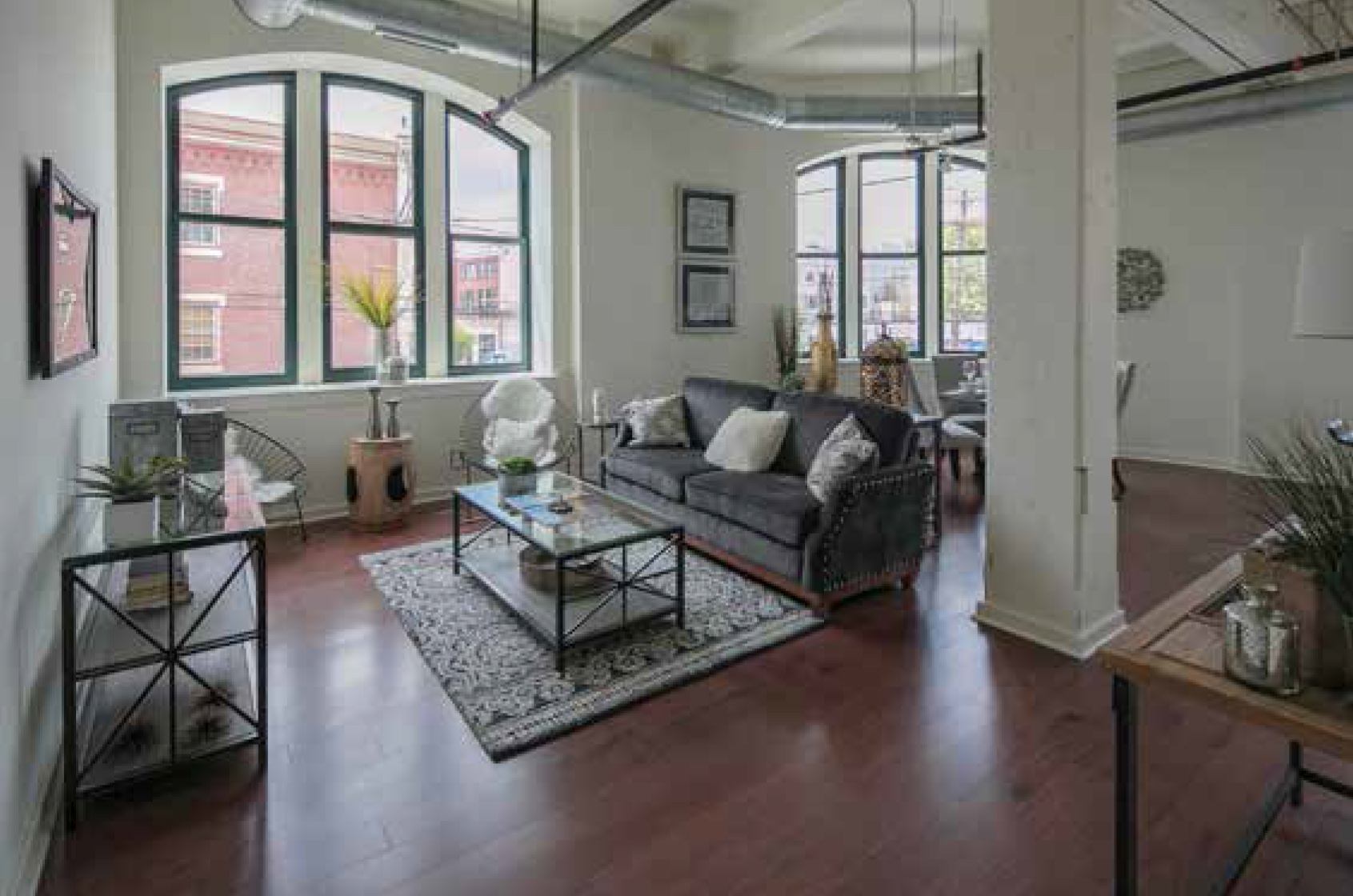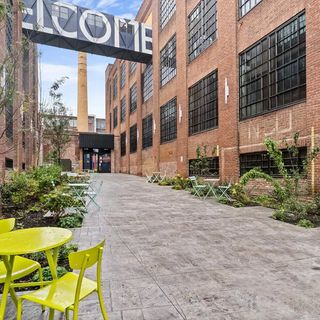In reviewing projects for historic tax credits (HTCs), the State Historic Preservation Office (SHPO) and National Park Service (NPS) evaluate proposed work under the Secretary of the Interior’s Standards for Rehabilitation (Standards). While the Standards are general in nature, there is published guidance to illuminate how the Standards are applied to projects.Essentially, the intent of the Standards is to evaluate proposed work to assess its impact on those materials and/or features of a building that are determined to be character-defining. Approaches, treatments and techniques that are consistent with the Standards are approved; those determined to adversely affect a building’s character are not recommended and can cause project denial. Denial can be the result of one specific treatment or can be the outcome of the cumulative effect of a series of proposed treatments. Thus, proposed treatments are viewed in the larger context e.g., the total impact on a building. But what is a character-defining feature? In short, it
depends on the nature of the building. Let’s look at how the SHPO and the NPS determine the defining characteristics of a building and discuss typical requirements placed on project approvals to ensure those features are appropriately treated.
Identifying Character-Defining Features
At the crux of the HTC program is the notion that buildings derive their overall character from the collection of features that are illustrative of a period or style of architecture and in turn, those features must be identified, retained and preserved for a building to maintain integrity. A rehabilitation project should be designed so that the defining characteristics of a building are not radically changed, obscured, damaged or destroyed. It is important to
keep in mind that the HTC review extends to the entire project site (including new construction)–exterior and interior–and there could be characterdefining features throughout a project. The reviewers generally derive what is character-defining from the architectural descriptions included in the Part 1 Application or National Register Nomination.Buildings on designed or even nondesigned landscapes could have an abundance of characterdefining site features. Within the realm of HTC projects, this is perhaps most commonly seen with garden-style apartment
complexes. For example, gardenstyle apartment complexes were designed following federal design guidelines that
encouraged curvilinear drives, dedicated pedestrian walkways, open grass areas between buildings to provide ample light, formal planting beds adjacent to building perimeters and scattered shade trees. Work that proposes significant change to those site features, such as the construction of new buildings on the open grass areas, would likely be determined inconsistent with the Standards and, therefore, not approvable. A building’s exterior derives its architectural character from its form, materials and the composition of features. For instance, bank buildings built in the 1920s often feature limestone-clad bases with multistory monumental windows, signifying the interior banking
hall. Cutting the limestone sills to create doors for a new retail use may be approvable in limited areas, but converting each window into a door would not likely be approved, as the monumental windows define the exterior and directly relate to the historic use of the interior. Midcentury office buildings were generally clad in sleek curtain walls with tinted glazing set within thin expressed metal framework. In this scenario, both the tinted glass and metal framework would be deemed character-defining. A proposal to change the glazing from original single-pane to insulated glass that would require modifications to the metal framework to add the structure necessary to support the heavier glass is not likely to be approved. Beyond the resulting visual change, the reviewers would also take into consideration the physical impact of such a modification on the original building elements, in this case, the physical impact and dimensional change that would result from adding structure to the original metal framework. Since the HTC review extends into the interior, it is important to anticipate at the start of the project which aspects of the interior might be considered character-defining. Interior floor plan, encompassing the arrangement and sequence of spaces, along with features and applied finishes, are considered in determining which features are character-defining. Interiors are generally comprised of a series of primary and secondary spaces and within each space, the
NPS considers the size, configuration, proportion and architectural detailing of each room in determining what defines a building’s character. In approaching a project, the development team should identify the hierarchy of a building interior so that the program can be designed to permit minimal changes to the sequence of spaces. For example, early 20th-century office buildings generally contain lobbies and flanking commercial spaces that are highly visible from the street and define the historic function. Enlargement of the lobby or, conversely, significant subdivision of the flanking large commercial spaces may not be permitted.On the upper floors, corridors–while not necessary historically accessible to the public–are also generally considered character-defining spaces and the
elimination or significant alteration to the corridor plan is generally not approvable. Features and finishes may also be deemed character-defining, such as chalkboards or built-in cupboards in a classroom in a historic school or the ornamental plaster ceiling in a school auditorium. Beyond floor plan, the NPS evaluates features and finishes and items deemed character-defining will necessitate a more restrictive rehabilitation approach.
Case Study: North Scranton Junior High School
Built in 1924, the North Scranton Junior High School is located on North Main Avenue in Scranton, Pa. The three-story brick school building is designed in the Late Gothic Revival style of architecture with a red brick façade and soaring iconic clock tower. In the interior, the school assumes a rectangular plan with a central auditorium flanked by open courtyards, surrounded by a wide corridor that provides access to the classrooms. Goodwill Industries of Northeast Pennsylvania recently completed an HTC rehabilitation, converting the vacant school into 58 senior apartments and a state-of-the-art 803-seat performing arts theater. School rehabilitations are among the most common candidates for HTC projects, often combining lowincome housing tax credit (LIHTC) with HTC. However,
these projects are not without challenge. Inherent in this building type is a formal floor plan with a succession of
spaces that are generally considered character-defining. In the case of the North Scranton Junior High School, the main lobby, auditorium and corridors were all determined character-defining, thus limiting the extent of change possible. Under the HTC approval, the main lobby plan had to be retained, along with the original paneled wood wainscoting and iron stair railings. The building’s corridors, which were significantly wider than what is typically constructed in multifamily buildings today, had to be retained in their historic configuration with the substantial wood door trim, transoms and interior windows retained throughout. At the onset of the project, it was recognized that subdivision of the school auditorium was unlikely to be approved by the NPS, so the initial plans called for mothballing the space. Goodwill Industries recognized the importance of the school as a community landmark and was eventually able to identify additional funding to allow the auditorium to be transformed into a modern performing arts center. This transformation required a delicate balance between retaining the characterdefining coffered ceiling, wood wainscoting and original balcony with decorative frieze, and the incorporation of modern theater lighting and sound equipment. The original school stage did not have the depth required for live theater performances, so in consultation with SHPO and the NPS, the stage was extended forward with the original skirt removed and reapplied and the stage flooring designed to demarcate the original depth. Flexibility and creativity
permitted this successful adaptive use of this space.
Case Study: A. F. Bernot Brothers Building
The A.F. Bernot Brothers Building in Philadelphia offers an interesting contrast to the North Scranton Junior High School. Built in 1901, the building was designed by a local architect and housed the main industrial plant for a dye works operation. As such, the building is industrial in character with red brick walls and a heavy timber interior structure. MM Partners of Philadelphia recently completed the building’s conversion into market-rate apartments with ground floor commercial space. Industrial buildings, like schools, are among the most common building types adaptively reused under the HTC program. However, unlike schools, industrial buildings are generally void of architectural detailing and ornamentation–their design is reflective of the
original function. Floor materials and column spacing were not randomly selected, but were dictated by the equipment size and function of the original industrial operation. In the HTC-approved rehabilitation of the A.F. Bernot Brothers Building, the exterior was cleaned and spot pointed, and new windows were installed that matched the historic configuration based on documentary evidence. The central challenge on the exterior was obtaining approval to alter the ground-floor windows as the high sill height precluded commercial reuse. The NPS believed the existing sill height was characterdefining, reflecting the industrial nature of the building. Unfortunately, the sill height prohibited a new commercial use that would engage with the street. Various proposals were made to seek approval to enlarge the ground-floor windows, and in the end, the NPS did permit the lowering of the sills to a height it believed would permit commercial use of the ground floor while allowing the building to express its historic industrial function. The interior of the A.F. Bernot Brothers Building expressed the original industrial function and was largely open in plan with utilitarian features and finishes. Whereas the North Scranton Junior High School contained architecturally distinguished finishes, the A. F. Bernot Brothers Building contained wood and concrete floors in poor condition, brick and flat plaster perimeter walls, and exposed wood ceiling structure. The open plan was interrupted only by the regular grid of columns. In the NPS-approved rehabilitation, it was essential that the industrial character of the interior be maintained. To that end, a column grid was retained and remained in view wherever possible. The exposed wood ceiling structure was maintained with insulation installed between the ceilings beams so that the beams remained expressed. Mechanical ductwork was exposed, which is considered by the NPS as appropriate in industrial buildings, and the ductwork was set back from the perimeter to restrict visibility from the street. The completed apartments retain the industrial feel of the interior and reflect the original character.
Conclusion
In approaching HTC developments, the project team should seek to identify the spaces and features that
will likely be determined to be character-defining, as significant alteration to those spaces and features is not likely. The North Scranton Junior High School and A. F. Bernot Brothers building were able to successfully reuse historic buildings while retaining character-defining features. Programming a project with the historic spaces in mind, as opposed to forcing a program into a space, is the more likely path to project approval.








